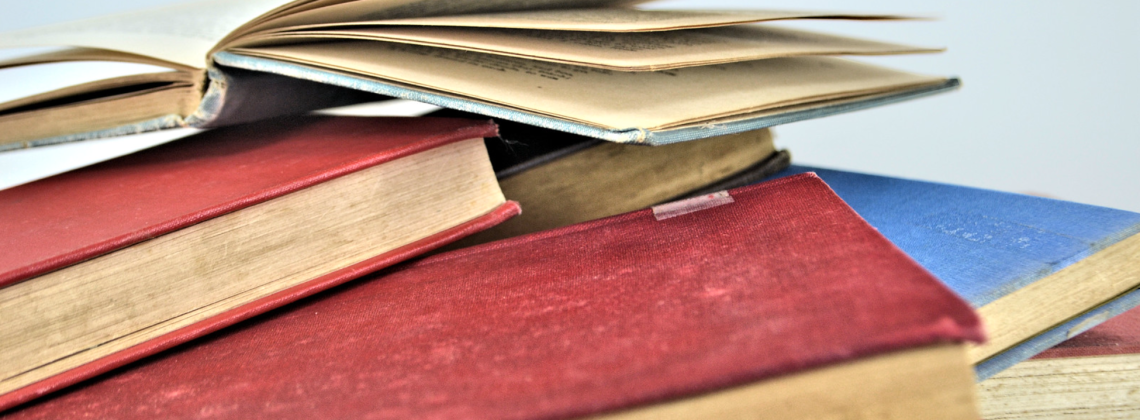

A memoir of reading, a memoir of joy
My Life in Seventeen Books: A Literary Memoir by Jon M. Sweeney. Monkfish Book Publishing, 2024. 180 pp., $23.00
If there is one thing a book lover loves, surely it is a book about the love of books. Prime examples of the genre include Helene Hanff’s 84, Charing Cross Road, Anne Fadiman’s Ex Libris: Confessions of a Common Reader, and Emma Smith’s Portable Magic. Such books provide layers of enjoyment: the reading itself, of course, but also the contemplation of the joys of reading, the pleasurable anticipation of discovering some new book or aspect of bookishness previously unknown, and perhaps most of all, the discovery that someone else, as C. S. Lewis says, shares with us “some insight or interest or even taste which the others do not share and which, till that moment, each believed to be his own unique treasure (or burden).”
Jon M. Sweeney’s My Life in Seventeen Books: A Literary Memoir fits firmly into this category. In its pages one can savor the felicity of bookstore browsing (especially in a crowded used books shop), the importance of “bookhood” (that elusive quality of the individual, physical book, created by weight, smell, texture of the page, and more), the way books converse with and inform each other in the reader’s mind, the wonder of stumbling upon a book that becomes part of one’s being. My Life is a slim little volume, each chapter easily finished over a mug of something hot. Still, it offers plenty of opportunities for one of the greatest joys of reading: staring off into space, pondering some train of thought sparked by what you’ve read.
The essays that make up the book cover a far-ranging variety of texts. Sweeney has spent decades with books—reading, selling, writing, and publishing—and he wears his familiarity lightly. Some of his seventeen authors may be unfamiliar; of the more well-known, the works discussed are often not their most prominent. In addition to books and authors named in the table of contents, Sweeney draws into conversation many others, among them Victor Hugo, William Hazlitt, Stephen King, bell hooks, Bernard of Clairvaux, Ezra Pound, E. M. Forster, M. F. K. Fisher, Jean Rhys, George MacDonald, Edith Stein, and Charles Lamb. The quoted writers alone could serve as the basis of a rich personal reading list or book discussion group.
But My Life is also, as the title promises, a memoir. Like its cousin, biography, literary memoir ideally offers us what Hermione Lee calls “a form of history” and “an investigation of identity.” It can help us understand a period in time or a set of events through the lens of one life. It can help us understand a little more about what it means to be human by examining specific facets of that life. Sweeney fulfills both goals.
The history recorded here is recent. I remember it, though my children won’t. Sweeney gives us glimpses of a world before Zoom and Google Books and Amazon, when a sales meeting with a bookseller in another state could only mean getting on a plane and going there; when you couldn’t do much more than judge a book by its cover before buying it; when finding a new book was less about search terms and more about serendipity in the aisle of a bookstore.
I felt a shock of recognition for a way of being I hadn’t exactly realized I had left behind. In high school I walked between classes reading the unassigned portions of my Literature textbook; now when I’m waiting I tend to check my phone. In college I spent weekends at used book sales; now I hear about books on Twitter and order them online. Sweeney’s description of standing alone at the prow of a ferry and reciting poetry took me back instantly to a trip before smartphones—the windswept deck of a Bainbridge Island ferry, a sunny table outside a little cafe, no companion but a slim volume of poems by Edna St. Vincent Millay just acquired from a tiny island bookstore. I miss it.
Sweeney’s awareness of these changes never rises to the level of didacticism or alarmism. And there are, after all, many advantages for bookish people in the present moment. I probably would not have been able to complete my most recent book while raising children in a pandemic—and you certainly wouldn’t be reading this review in an online publication!—if these technologies hadn’t been developed. And yet, Sweeney’s description of how books have touched every corner of his life is poignant when coupled with his acknowledgment that, despite this indebtedness, technological change is altering that relationship, perhaps beyond recognition.
My Life is Sweeney’s second memoir. He now sees his first, published in his thirties, as an exercise in wishful thinking more than a careful investigation of his identity. By contrast, this book is an attempt at a more thorough self-examination. It’s tricky for any of us to know if we’re accurately evaluating ourselves, since among other obstacles we cannot see ourselves through others’ eyes. But the impulses he considers in himself are not always likable, which suggests a certain measure of success.
Despite that, this is not a tell-all. We get glimpses of events and people in Sweeney’s life as they affect and are affected by his bookishness, but the kinds of information that characterize the telling of a life in, say, an obituary or an autobiography are in comparatively short supply. Rather, this is an inquiry into why each book captured the author when it did, into what he can glean from these books to help him understand his hopes, his fears, his loves—into, that is, what his life has been about. It really is a life in books.
This careful focus has the effect, I think, of making these essays more accessible. While Sweeney notes in the introduction that “the hold books can have upon us can be difficult to explain,” his affection for his chosen seventeen is surely explained by their universal themes—loneliness, guilt, faith, conversion, idealism, exile, homecoming, human finitude. Not every book he describes rings a bell for me; neither do all the conclusions he reaches toward resonate for me. But the reader doesn’t have to have shared his experiences or loved the same books to get where he’s coming from.
This is the beauty of life-writing, in whatever form we take it up. Reading about a life reminds us that we are neither the center of the universe nor the gold standard of human experience, that there are billions of other people out there with their own experiences and their own ways of seeing things. It takes us out of our navel gazing and turns our eyes outward. But in almost the same breath it gently encourages us to examine our own lives, to do a little navel gazing in a healthy manner, to turn away from the unexamined life about which Socrates is supposed to have warned us.
Honestly examining life—our own and others—is a melancholy affair. Even if it were possible to leave aside the unsupportable suffering arising from war, abuse, cancer, and so on, such examination involves acknowledging the wrenching ephemerality of our lives. We can never stop changing, and with change comes the loss of the self and the life that’s left behind, culminating in the ultimate loss. “Contemplatives face their death honestly,” Sweeney writes.
But as the epigraph that opens the book notes, change is also the site of hope. Turning from the examination of “much more than half a life” to look ahead, Sweeney takes up in the last chapter the essays of Montaigne, the writer who created the essay as we know it. (We end by going back to the beginning; we begin again at the end.) “In books,” he quotes, “I seek only pleasure through an honest pastime; or, if I study, I seek only the knowledge which tells me how to know myself, and teaches me to die well and to live well.” Change and loss are unavoidable, but in investigating our history and our identity, we open the door to change that not only leaves the past behind but also carries us toward wholeness. Thus Sweeney suggests that a contemplative streak is both the burden and the treasure of the bookish life.
Now if you’ll excuse me, I need to go sniff a little volume of poems by Edna St. Vincent Millay.
Lucy S. R. Austen lives in the beautiful Pacific Northwest surrounded by the books that have shaped her. She is the author of Elisabeth Elliot: A Life, and has contributed to various publications. You can connect with her on Twitter, Substack, and at LucySRAusten.com
I’m so delighted that Lucy S. R. Austen is writing for _Current_. Besides one brief family visit when I was child, my first trip to New York City came in 1997. I was there to visit one of my best friends who had moved from Indiana to do a PhD in Philosophy at Fordham University. The day I arrived we heard it announced on the radio that Allen Ginsberg had died. My friend led me through vibrant neighborhoods of small shops and bars to a narrow bookstore where he duly found a copy of _Howl_ on the shelves and bought it. He then brought me to Central Park where we sat on a bench and he read the entire poem aloud to me.